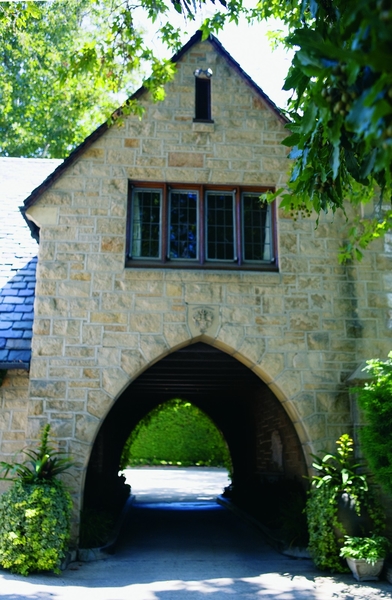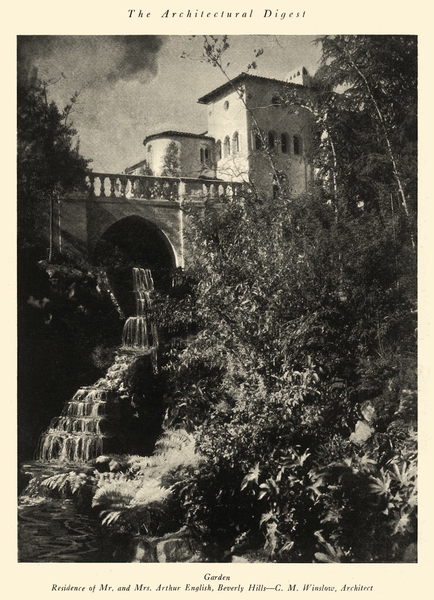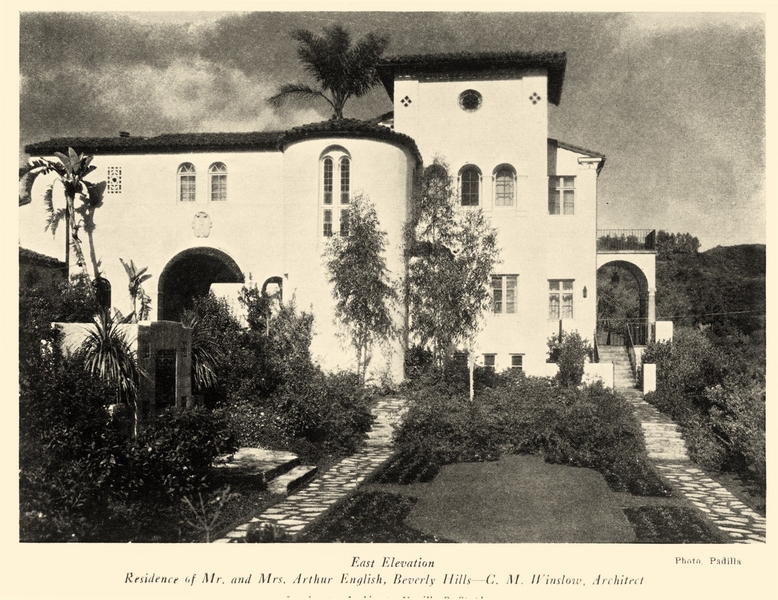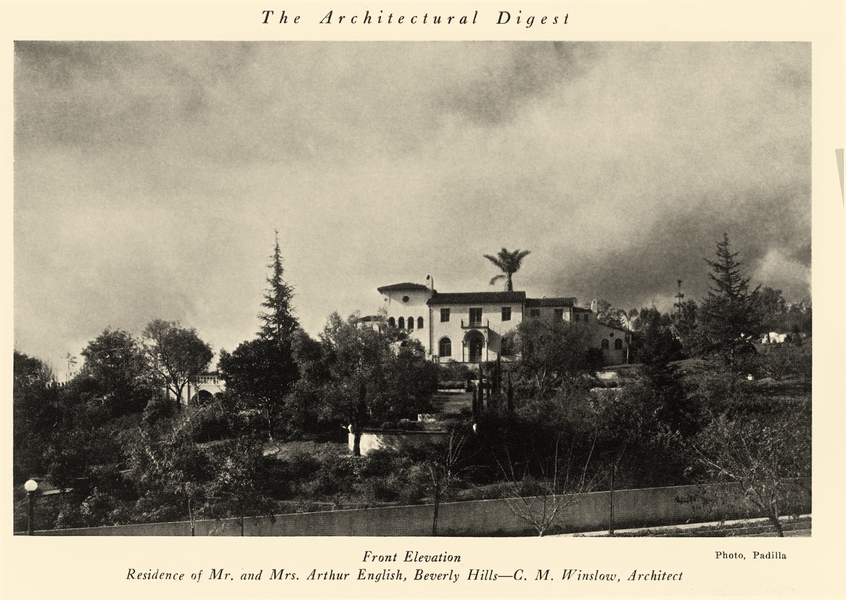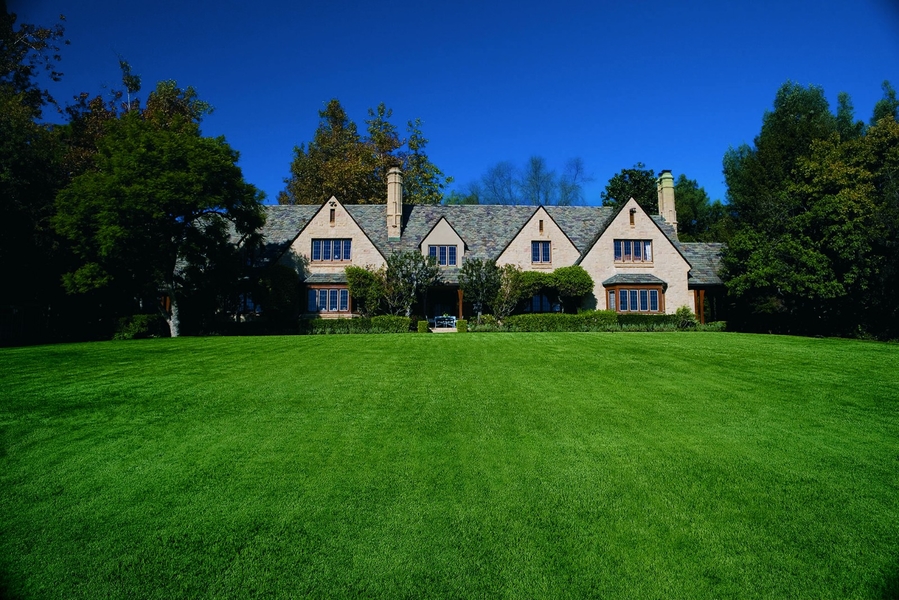In the early years, Beverly Hills was a hot spot for wealthy retirees who wanted a reprieve from the colder, Midwestern states. Acquiring a coveted spot among Hollywood’s top stars, movie producers and oil tycoons ensured that they remained at the top of the social pyramid, maintaining the status they held in their previous circle of friends and acquaintances. For Oscar English, a Nebraska native who made his fortune in gypsum, not just any parcel of land would suffice.
Oscar and his wife, Alice, wanted their new home in Beverly Hills to be a remarkable landmark in an area that already contained many impressive estates. In 1926, the couple found their perfect location, on an eleven-acre plot between Foothill Road and Alpine Drive. The setting was just as they had hoped for, a beautiful piece of property bordering the spectacular Sunset Boulevard.
Ready to build a home that rivaled the grandness of their property, the couple hired architect Arthur Kelly to draw up plans for a luxurious English Tudor. Kelly, who specialized in this particular style of home, designed a two-story structure with rough-hewn stone walls, massive stone-clad chimneys and beautiful gables that lined the rooftops. The inside rivaled the exterior with floor-to-ceiling wooden panels and stained glass windows. The couple filled the home with new “antiques,” furniture that was produced in California but had the look and feel of an older piece.
English knew that his home would not necessarily be the biggest in the neighborhood, but he positioned his home so that it was easily seen from varying points. The home was set up on a knoll with an extensive front lawn that sloped down to Sunset Boulevard, creating a majestic scene for those passing by. In addition to the spectacular view of Oscar’s home, his brother, Arthur English, built his home on the same parcel of land. Arthur chose to build his home in the popular Spanish Colonial Revival style instead of following in Oscar’s footsteps. The two homes resided side-by-side, each magnificent in its own way.
Although their estate was everything they had wanted, Alice’s health issues led her into a depression that she could not recover from. She told Oscar of her desire to commit suicide. Oscar knew he could not live without his beloved, so he joined her in planning their deaths. In October, 1935, the couple took their lives by drinking poison together in their bedroom. After drinking the poison, the two tucked themselves into their separate twin beds and died shortly after. Their daughter, Lucille, and their son-in-law lived with them in the house, but after her parents’ death, Lucille could no longer stand to live in the house they had so loved.
Throughout the next couple of decades, the property was sold to varying buyers until the 1950s, when the property was split into six smaller lots to accommodate the growing area. While Arthur’s home burnt to the ground, Oscar’s home still stands, but on a much smaller two-and-a-half-acre lot. It is the only remaining evidence of a once remarkable landmark.


